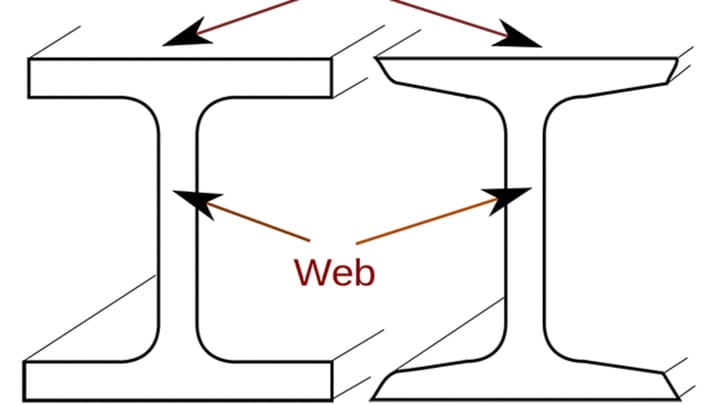English speakers know it as an "I-beam" for its similarity to the capital letter "I" (with serifs). In many European languages it's a "double-T" beam. Or you may know it as an "H-beam." In any case, this beam is the support structure for tons of modern buildings. So why is it shaped that way?
Long story short, the combination of the "web" (the middle bit of the beam) and the "flange" (the top and bottom bits) offers resistance both to shear and bending forces. Watch this short video for the math behind the engineering you're probably sitting on right now:
Important note: In the video, there is a typo in the max deflection formula shown. The numerator shown should include L to the fourth power, not third. (On desktop browsers, an annotation fixes this, but on mobile it often doesn't show up!) If you're not into video explanations, Wikipedia's page on I-beams is pretty solid. For more videos like this, check out Real Engineering on YouTube.
(Photo courtesy of Bbanerje // CC-BY-SA-3.0.)
